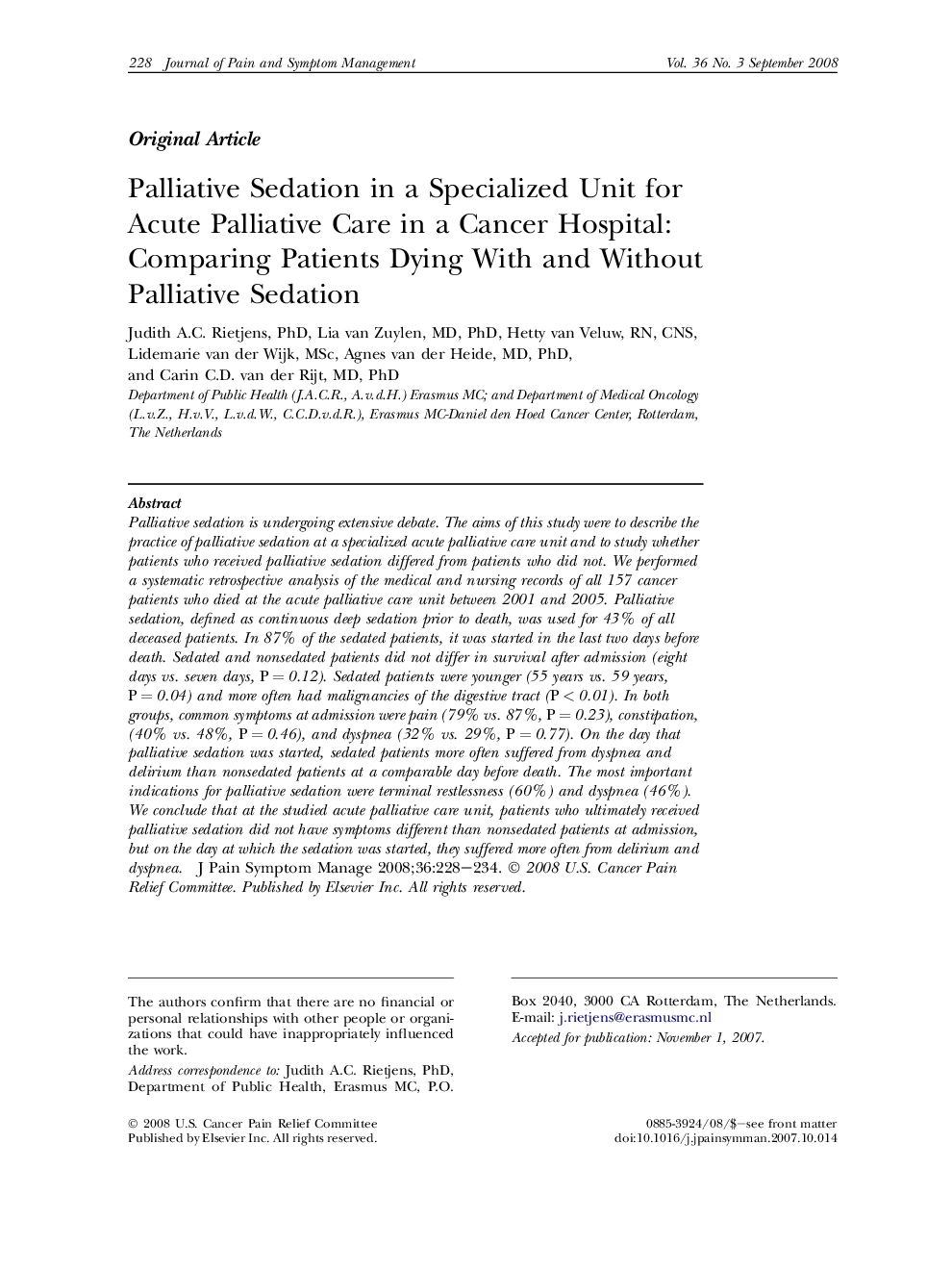| Article ID | Journal | Published Year | Pages | File Type |
|---|---|---|---|---|
| 2730863 | Journal of Pain and Symptom Management | 2008 | 7 Pages |
Palliative sedation is undergoing extensive debate. The aims of this study were to describe the practice of palliative sedation at a specialized acute palliative care unit and to study whether patients who received palliative sedation differed from patients who did not. We performed a systematic retrospective analysis of the medical and nursing records of all 157 cancer patients who died at the acute palliative care unit between 2001 and 2005. Palliative sedation, defined as continuous deep sedation prior to death, was used for 43% of all deceased patients. In 87% of the sedated patients, it was started in the last two days before death. Sedated and nonsedated patients did not differ in survival after admission (eight days vs. seven days, P = 0.12). Sedated patients were younger (55 years vs. 59 years, P = 0.04) and more often had malignancies of the digestive tract (P < 0.01). In both groups, common symptoms at admission were pain (79% vs. 87%, P = 0.23), constipation, (40% vs. 48%, P = 0.46), and dyspnea (32% vs. 29%, P = 0.77). On the day that palliative sedation was started, sedated patients more often suffered from dyspnea and delirium than nonsedated patients at a comparable day before death. The most important indications for palliative sedation were terminal restlessness (60%) and dyspnea (46%). We conclude that at the studied acute palliative care unit, patients who ultimately received palliative sedation did not have symptoms different than nonsedated patients at admission, but on the day at which the sedation was started, they suffered more often from delirium and dyspnea.
